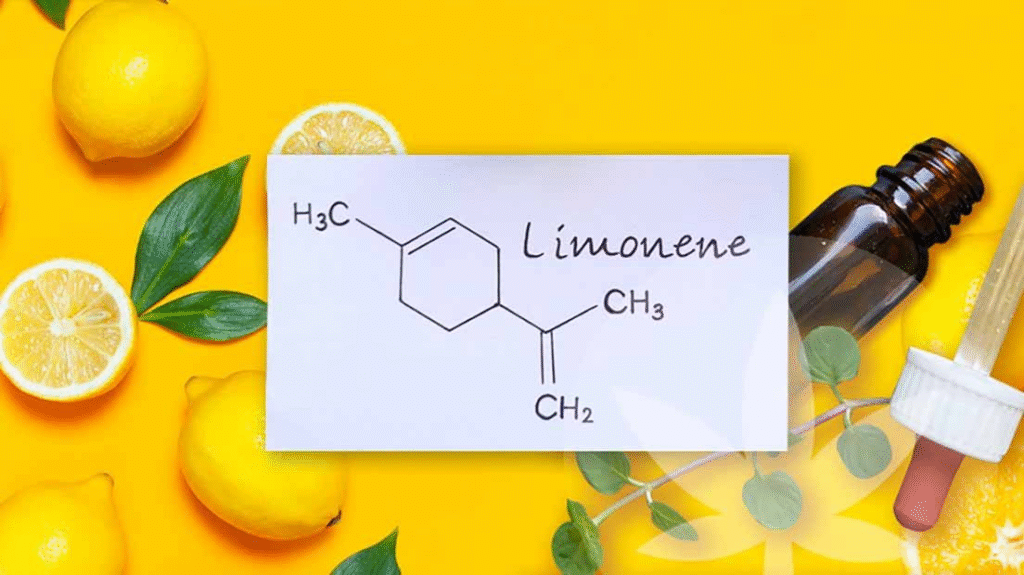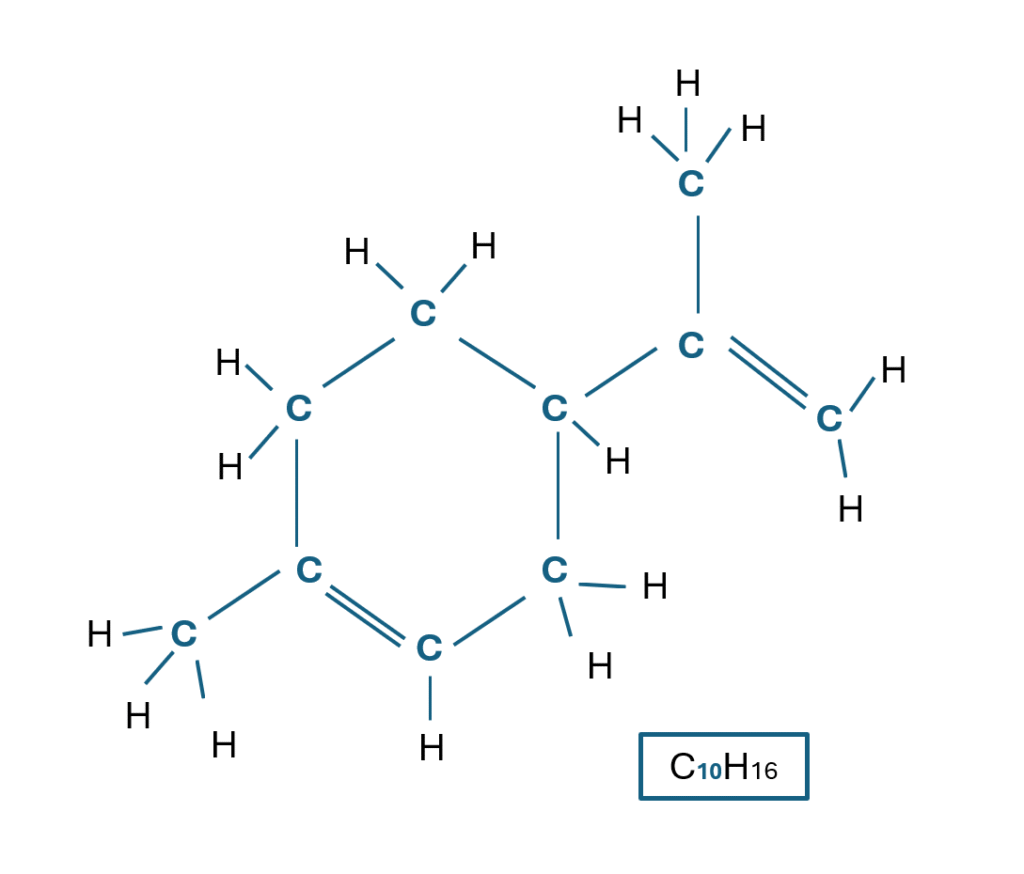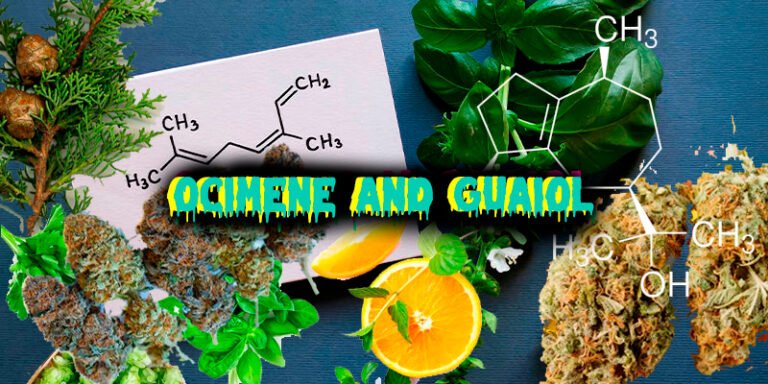Cannabis plants produce hundreds of Terpenes. Some of these compounds have generated more interest than others due to their abundant presence in the buds, their characteristic aromas and flavors and their contribution to the effects of each strain. Among them is Limonene, characterized by its citrus flavor and stimulating effects.

The Chemistry of Limonene
Terpenes are aromatic compounds made up of building blocks of isoprene units, which are small, five-carbon molecules with the chemical formula C5H8. Plants’ biochemical pathways combine isoprene units into larger, increasingly complex molecules that perform different functions.
By fusing two isoprene units, plants create molecules that belong to the group of monoterpenes; these small, volatile compounds have a total of 10 Carbon atoms. Similarly, sesquiterpenes are formed from three isoprene units and have 15 Carbon atoms. Terpenes belonging to these two groups evaporate at low temperatures and contribute to the rich aromas of many plants.
Then there are diterpenes; made up of four isoprene units and a total of 20 Carbon atoms, these terpenes are used by plants to produce resins and glues. On the other hand, tetraterpenes, composed of eight isoprene units (40 Carbon atoms), contribute to the yellow and orange pigments of many plants, such as carotenoids.
Limonene, being a cyclic monoterpene, has a six-membered carbon ring, two carbon-carbon double bonds, and an isopropyl group attached to the carbon ring. All these characteristics give rise to the chemical formula C10H16.

Limonene also exists as two different isomers (molecules made up of the same substances but in different distributions): R-Limonene and S-Limonene. The first one is present in higher quantities in cannabis and has a citrus aroma, while the other is less common and has a pine scent.
Limonene can also undergo several chemical reactions that transform it into other Terpenes. Oxidation can degrade Limonene and convert it into Carveol, Carvone, and Limonene oxide. Similarly, when isomerized with mineral acid, Limonene becomes α-Pinene (Pinene is another Terpene that we talk about in our blog).
Just like other Terpenes, Limonene is not exclusive to cannabis flowers. Limonene constitutes about 97% of the essential oil in orange peel. It is also present in other citrus fruits, such as grapefruit and lemon. Limonene is also present in dill, celery, poplar, and larch trees.

Fragance and Flavor of Limonene
The experience will be dominated by citrus, orange, and lemon flavors and aromas. Terpenes do not act in isolation on the buds; other terpenes also contribute complementary flavors of wood, spice, sugar, fruit, or skunk, depending on the strain in question, resulting in a more complex flavor, but with the distinct citrus flavor of Limonene.
Effects Associated with Limonene in cannabis
Marijuana strains rich in Limonene often produce effects associated with «sativa» strains. This classification does not reflect the effects of each strain; the truth is that Limonene produces a cerebral, energizing, and stimulating effect. Buds high in this Terpene often have a motivating effect and promote creativity.
Furthermore, some Terpenes are known to act synergistically with cannabinoids such as THC and CBD through the «entourage effect». Recent evidence suggests that when consumed concurrently, Limonene alters the way THC activates CB1 receptors in the endocannabinoid system, which is the primary mechanism responsible for getting high from cannabis.










